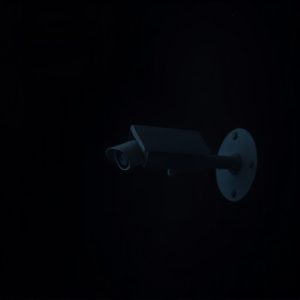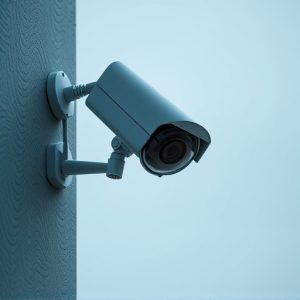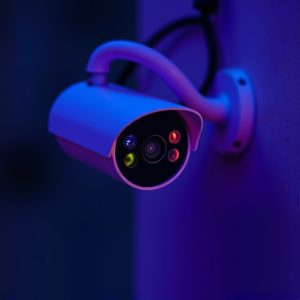Mastering Discreet Surveillance: The Role and Impact of Hidden Security Cameras
Hidden security cameras have revolutionized surveillance by offering discreet, high-quality monitori…….
Hidden security cameras have revolutionized surveillance by offering discreet, high-quality monitoring that enhances safety while maintaining aesthetic integrity. These advanced devices are designed to blend into environments like homes and offices, often camouflaged as everyday objects. They boast sophisticated optics, motion sensors, and night vision capabilities, ensuring comprehensive coverage and clear imagery around the clock. Their integration with AI and machine learning enables intelligent analysis of footage for security threats. Strategic placement is key to their effectiveness, with cameras positioning themselves to avoid detection while overseeing critical areas and avoiding blind spots. Legal and ethical use of these cameras is paramount, requiring adherence to privacy laws and respecting individuals' expectations of privacy. Homeowners and businesses must navigate this balance by ensuring transparency in surveillance practices and handling data responsibly to uphold ethical standards and comply with legal requirements.
Hidden security cameras have emerged as a pivotal tool in safeguarding spaces while maintaining aesthetic integrity. This article delves into the nuances of these discreet surveillance systems, exploring their diverse applications and benefits, technological advancements, strategic placement for comprehensive coverage, and the critical legal and ethical considerations they entail. Join us as we unravel the intricacies of covert monitoring and how it can enhance security without compromising on design or privacy.
Understanding Hidden Security Cameras: Applications and Benefits
Hidden security cameras serve as a discreet means of enhancing safety and security for individuals and businesses alike. These cameras are designed to be inconspicuous, effectively blending into their surroundings to deter theft, vandalism, or any other malicious activities without drawing attention. The technology behind hidden cameras has advanced significantly, allowing them to function optimally in various lighting conditions and capture high-quality footage that can be crucial for identifying individuals involved in illicit activities.
Deploying hidden security cameras extends beyond the traditional applications of surveillance; they are increasingly used in sensitive environments such as medical facilities, financial institutions, and private residences where maintaining privacy is paramount while ensuring the utmost security. Moreover, their application has expanded into commercial settings to monitor customer-facing services, employee productivity, and inventory management, thus offering a comprehensive range of benefits that include deterring criminal activity, enhancing operational efficiency, and safeguarding valuable assets. The use of hidden cameras can be tailored to the specific security needs of any location, ensuring peace of mind through effective yet unobtrusive monitoring solutions.
The Technology Behind Discreet Surveillance Systems
Hidden security cameras play a pivotal role in modern surveillance systems, leveraging advanced technology to remain inconspicuous while capturing high-resolution footage. These devices are expertly crafted to blend seamlessly into everyday environments, from residential homes to sensitive commercial spaces. They utilize compact designs and disguise themselves as ordinary objects, such as clocks, smoke detectors, or even picture frames. The integration of sophisticated optics and motion sensors ensures that these cameras can operate without drawing attention, yet still provide clear visuals and real-time alerts upon the detection of unexpected movement or activities.
The technology behind these discreet surveillance systems is a testament to the ingenuity of security engineers. They incorporate elements like infrared capabilities for night vision, enabling the cameras to record footage regardless of lighting conditions. Additionally, with advancements in wireless communication, hidden security cameras can transmit data directly to monitoring platforms without any physical cables, offering greater flexibility and making it even harder for potential threats to identify or disable them. The use of artificial intelligence and machine learning algorithms also enhances their effectiveness by analyzing footage and differentiating between regular occurrences and potential security breaches, thereby providing property owners with a reliable layer of security.
Placement Strategies for Optimal Coverage with Hidden Cameras
When implementing a covert surveillance system, placement is paramount for achieving optimal coverage and capturing high-quality footage undetected. Hidden security cameras should be strategically positioned to cover blind spots and critical areas without drawing attention. A common approach is to integrate these cameras into everyday objects where they are least expected; think of wall clocks, smoke detectors, or even overhead lighting fixtures. By blending with the environment, hidden security cameras can monitor activities in a room or area discreetly.
Another key aspect in placement strategy is ensuring a clear line of sight without obstructing normal traffic flow or activity within the space. Cameras should be angled appropriately to avoid reflections or glare that could obscure images. Additionally, they should be placed at heights that prevent tampering while still capturing a wide field of view. In corridors and doorways, for instance, hidden cameras can be set up above entry points or around corners to record anyone passing through. It’s also crucial to consider the camera’s field of vision in relation to the area’s most vulnerable points, ensuring that no blind spots are left unmonitored. With a thoughtful approach to placement and a variety of hidden security camera models available, businesses and homeowners can significantly enhance their security measures with devices that are both effective and inconspicuous.
Legal Considerations and Ethical Use of Secret Security Cameras
When integrating secret security cameras into private or public spaces, legal considerations are paramount to ensure compliance with privacy laws and regulations. These devices must be installed and operated in accordance with state and federal statutes, which vary by jurisdiction. It’s crucial to understand that under many privacy laws, individuals have a reasonable expectation of privacy. This means that the use of hidden security cameras should be transparent to avoid infringing on this right. Businesses and homeowners must obtain consent from individuals who may be filmed, or at least provide clear signage indicating surveillance is in operation. Additionally, the footage captured must be stored and handled in a manner that protects individual privacy interests, adhering to data protection standards.
Beyond legal frameworks, the ethical use of hidden security cameras also extends to considerations of trust and consent. Ethically, the deployment of such surveillance tools should respect individuals’ rights to privacy and dignity. It’s important for entities using these cameras to consider the purpose behind their installation and to ensure that their usage is proportionate to that aim. For instance, a business might use hidden security cameras to deter theft or enhance security without invading patrons’ privacy. In all cases, the ethical application of secret surveillance should be balanced with the right to privacy, and users must navigate these technologies with caution and respect for individuals’ rights. Transparency in how the footage is used and who has access to it further underscores responsible deployment.


